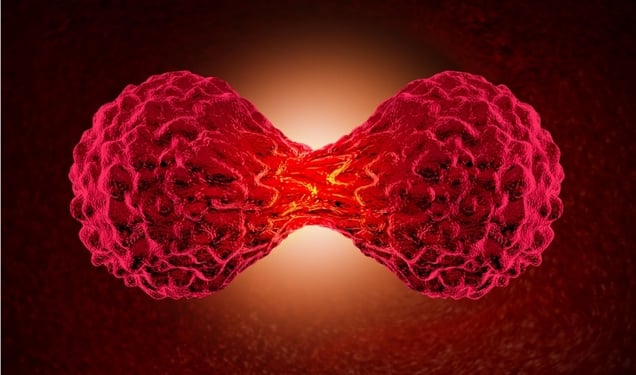Keywords:
By Achim von Leoprechting
Next-generation sequencing (NGS) is poised to become a decisive tool in diagnostic, therapeutic, and prognostic applications in oncology. In the first part of this two-part series, we saw that sequencing tumor-derived DNA alone can risk incorrect diagnosis by misinterpreting somatic alterations as being tumor-specific. This pinpoints the need to sequence normal tissue in parallel to map out the somatic alterations already present in the patient, which clearly has implications for the future of NGS-based diagnosis and workflows in the clinical laboratory.

Sequencing Overload: Preparing for the Future
An emerging trend toward sequencing matched tumor and normal DNA samples would clearly increase the NGS volume and related sample extraction and library preparation workflows in diagnostics labs. The discovery of new tumor-specific genetic alterations that may be relevant for predicting cancer progression, metastatic potential, and drug sensitivity or resistance, for example, and the eventual translation of these molecular tools to the bedside, would have an even greater impact on the demands placed on clinical labs.
The envisioned transition in healthcare to a more effective and cost-efficient strategy based on personalized medicine will necessitate access to an abundance of genetic information for each and every patient, at various stages of health and disease. Thus, rapid, high-throughput, massively parallel sequencing performed in a regulated environment will be the new norm for clinical labs. Clinical NGS will become a commodity, essentially as it has become in the research setting. This extensive application of NGS will be a reality across a broad range of diseases, but perhaps no more acutely than in cancer.
"NGS-based diagnosis is specially promising for diseases that have a highly complex and heterogeneous genetic composition," such as oncology, which is "very well positioned to benefit greatly from such an approach," according to Pant and colleagues.4
"It is easy to imagine that soon every patient will have both their constitutional and cancer genomes sequenced, the latter perhaps multiple times in order to monitor disease progression, thus enabling an accurate molecular subtyping of disease and the rational use of molecularly guided therapies," state Meldrum and coauthors.5 Regardless of the sequencing technology used, the biggest bottleneck and challenges lie in sample preparation. This involves DNA extraction, which is laborious and often difficult, especially when working with formalin-fixed paraffin-embedded specimens.
Pant and coauthors contend that the current testing paradigm for precision medicine is unsustainable. "Recent results from clinical studies support the emerging concept of the 'mutation signature' or spectrum of correlated mutations in cancer."4 In other words, combinations of mutations will be more predictive of treatment response than will individual gene mutations. Therefore, "physicians will want to examine the tumor's whole cancer genome, both somatic mutations and transcriptional changes, to identify the most personalized therapy."
Thus, the use of RNAseq to analyze the transcriptome of tumor cells and assess the relative expression of a mutated gene will likely become much more common. Rizzo and Buck note that NGS-based RNAseq studies continue "to identify and implicate key somatic mutations in oncogenesis."6 They point out that certain oncogenic mutations identified in tumor samples using RNAseq have also been shown to alter gene function in vivo in a way that agrees with the tumor's clinical behavior.
Massive throughput made routine
The various trends described here, including advances in NGS technology and factors driving personalized medicine, all point to a future not far off on the horizon in which massively parallel sequencing will be routinely used for cancer diagnosis and to guide therapeutic decision-making. As clinical labs begin to realize a dramatic uptick in the demand for NGS, rapid adoption of high-throughput solutions to upstream sample handling and library preparation for NGS workflows will be critical. Robotic systems that automate sample prep enable faster, more efficient, and more secure sample processing with better accuracy and consistency than manual techniques. They can also provide the flexibility to accommodate commercial and customized, laboratory-developed diagnostic tests and sample prep protocols.
In addition to improved speed and productivity, automation and computer-driven systems bring several crucial advantages to the clinical laboratory. Not least of these is an emphasis on sample tracking and secure chain-of-custody, as well as ensuring the quality controls, validation, and documentation required in a regulated environment. Furthermore, robotic liquid handling and sample processing minimize risk of contamination and maximize accuracy and reproducibility compared to manual techniques.7
With increased throughput, efficiency, and productivity typically comes cost savings. Thus, as labs ramp up their sequencing activity in response to increasing demand for massively parallel sequencing capabilities, and they transition to automated systems to handle the added volume of NGS and workload related sample prep functions, they are likely to realize quite quickly that cost need not be a barrier to meeting the evolving needs of clinical oncology.
Don't miss a blog post
References
- Gagan J, Van Allen EM. "Next-generation sequencing to guide cancer therapy." Genome Medicine 2015; 7:80.
- Williams R. "Cancer sequencing controls." The Scientist 2015. Available at http://www.the-scientist.com/?articles.view/articleNo/42682/title/Cancer-Sequencing-Controls/(Last accessed December 2015).
- Jones S, Anagnostou V, Lytle K, et al. "Personalized genomic analyses for cancer mutation discovery and interpretation." Sci Transl Med 2015;7(283):283.
- Pant S, Weiner R, Marton MJ. "Navigating the rapids: The development of regulated next-generation sequencing-based clinical trial assays and companion diagnostics." Frontiers in Oncology 2014;4:doi:10.3389/fonc.2014.00078
- Meldrum C, Doyle MA, Tothill RW. "Next-generation sequencing for cancer diagnostics: A practical perspective." Clin Biochem Rev 20111;32:177.
- Rizzo JM, Buck MJ. "Key principles and clinical applications of 'next-generation' DNA sequencing." Cancer Prev Res 2012;5(7):887.
- Fassunke J, Haller F, Hebele S, et al. "Utility of different massive parallel sequencing platforms for mutation profiling in clinical samples and identification of pitfalls using FFPE tissue." Internat J Mol Med 2015;36:1233-1243.
Keywords:










